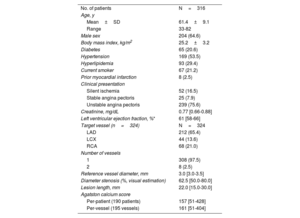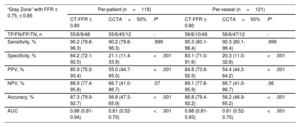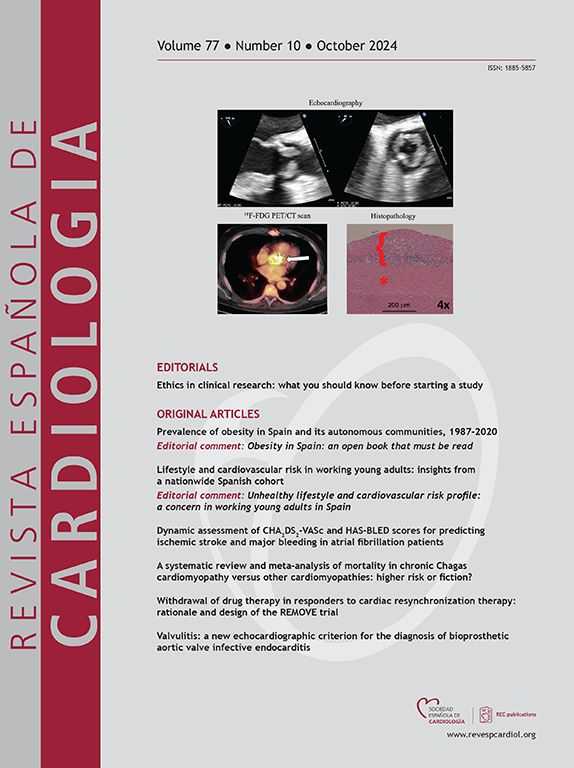
A new computed tomography-derived fractional flow reserve (CT-FFR) technique with a “coarse-to-fine subpixel” algorithm has been developed to generate precise lumen contours. The aim of this study was to assess the diagnostic performance of this new CT-FFR algorithm for discriminating lesion-specific ischemia using wire-based FFR ≤ 0.80 as the reference standard in patients with coronary artery disease.
MethodsThis prospective, multicenter study screened 330 patients undergoing coronary CT angiography (CCTA) and invasive FFR (median interval 2 days) from 6 tertiary hospitals. CT-FFR was evaluated in a blinded fashion with a “coarse-to-fine subpixel” algorithm for lumen contour.
ResultsBetween March 2019 and May 2020, we included 316 patients with 324 vessels. There was a good correlation between CT-FFR and invasive FFR (r=0.76, P<.001). The diagnostic sensitivity, specificity, and accuracy on a per-vessel level were 95.3%, 89.8%, and 92.0% for CT-FFR, and 96.4%, 26.4%, and 53.1% for CCTA>50% stenosis, respectively. CT-FFR showed improved discrimination of ischemia compared with CCTA alone overall (AUC, 0.95 vs 0.74, P<.001) and in intermediate (AUC, 0.96 vs 0.62, P<.001) and “gray zone” lesions (AUC, 0.88 vs 0.61, P<.001). The diagnostic specificity, accuracy, and AUC for CT-FFR (71.9%, 82.8%, and 0.84) outperformed CCTA (9.4%, 48.3%, and 0.66) in patients or in vessels with severe calcification (all P<.05).
ConclusionsCT-FFR with a new “coarse-to-fine subpixel” algorithm showed high performance in identifying hemodynamically significant stenosis. The diagnostic performance of CT-FFR was superior to that of CCTA in intermediate lesions, “gray zone” lesions, and severely calcified lesions.
Clinical Trial Register: NCT04731285
Keywords
Identify yourself
Not yet a subscriber to the journal?
Purchase access to the article
By purchasing the article, the PDF of the same can be downloaded
Price: 19,34 €
Phone for incidents
Monday to Friday from 9am to 6pm (GMT+1) except for the months of July and August, which will be from 9am to 3pm






